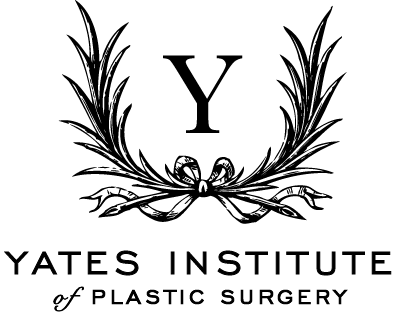Tummy Tuck Surgery Scars
Plastic surgery offers an effective solution to correct the belly apron – the excess of skin that can occur at the inferior abdominal level after considerable weight loss, one or multiple pregnancies, or with aging. The procedure performed to restore the abdominal area's firmness and contour is called the tummy tuck or "abdominoplasty" in medical terms.
The abdominoplasty is performed to help you get rid of the skin folds that can cover partly or entirely the suprapubic area. During the surgery, the plastic surgeon can fix a potential hernia and also correct diastasis recti. The tummy is firmer and flatter, and the patient can enjoy the results of the procedure for a long time, as long as he or she maintains a stable weight.
The tummy tuck intervention is among the most complex procedures performed nowadays, and it leaves behind scars, just like any other surgery. Depending on the specifics of each case and the physiological characteristics of the patient, the scars are more or less visible. Let's see together what you can expect in terms of scars after the tummy tuck surgery.
Tummy Tuck – Surgical Approach
To get a better idea about the scars after the abdominoplasty, we need to discuss the surgical approach. During the initial consultation with the plastic surgeon, the patient finds the details of the surgical plan and the position of the incisions. These are the basic steps of a tummy tuck surgery:
1. General anesthesia
The procedure is performed with the patient under general anesthesia. The procedure can take quite some time – even up to 4, 5 hours, so general anesthesia is the only option for the procedure.
2. Incisions are made
The plastic surgeon makes the incisions that allow detaching the skin and fat tissue from the abdominal wall muscles. The skin is lifted up to the rib cage level.
3. Strengthening abdominal muscles
Weak abdominal muscles are often a cause of the lack of firmness in the area. The plastic surgeon brings together the right and left abdominal muscles and sutures them on the median line to create a firm aspect of the tummy post-op.
4. Eliminating excess skin
The plastic surgeon redrapes the skin on the tummy, making sure it has good tension for a better contour of the abdomen. The excess skin is then eliminated, and the incisions are sutured.
Where are the Tummy Tuck Scars Placed?
If you don't know what to expect in terms of the position of the scars after the abdominoplasty, it is actually all up to the characteristics of the patient. If the patient presents lots of excess skin folds on the tummy or even on the flanks and the back, more incisions might be required, so there will be more scarring than usual.
Mini Tummy Tuck Scars
The mini tummy tuck is the procedure performed on patients with minor skin sagginess on the tummy. The intervention entails a small horizontal incision, positioned low on the abdominal wall, on the suprapubic area. The scar left behind after the mini tummy tuck is barely visible as it is hidden in the natural folds of the skin.
Traditional Tummy Tuck Scars
The traditional tummy tuck surgery entails two incisions – a horizontal one in the suprapubic area used to eliminate the skin excess and another one – a circular incision around the belly button used to reposition the navel. The horizontal incision can go from one hip bone to the other, so it's quite lengthy, but it could be barely visible after the cicatrization process is completed.
Extended Tummy Tuck Scars
People who lost a lot of weight suddenly are often left with an excess of skin not only at the level of the abdominal area but also the flanks and the upper part of the thighs. In this case, performing just the traditional tummy tuck would leave them with what we call "dog ears" – skin folds on the flanks that look aesthetically unpleasing. To create nice contours of the midline and abdominal area, the plastic surgeon needs to address the excess skin (and/or fat tissue) in the flanks area too. Aside from the two incisions of the traditional tummy tuck, the surgeon needs to make additional incisions on the flanks for the extended tummy tuck. Usually, these incisions are a continuation of the horizontal incision in the suprapubic area.
How Visible are the Scars after a Tummy Tuck Surgery?
While the scars are significant in this case, they are barely visible when the healing is completed. However, you need to keep in mind that it might take up to eight to twelve months for the scars to mature and heal completely. During this time, the patient needs to follow a set of rules to avoid complications.
To make sure the cicatrization process goes on smoothly, the patient should avoid smoking for at least 2 to 3 weeks post-op (skin necrosis is one of the complications associated with the lack of proper oxygenation of the tissues caused by smoking). Avoiding sun exposure on the incisions for twelve months post-op is also important if you want barely visible scars.
The plastic surgeon will also advise you to avoid lifting heavy objects, stretching, and even coughing and sneezing for a few weeks post-op to ensure the incisions are not ruptured as this might lead to more visible scars.
Abnormal Scars after the Tummy Tuck
Following the recommendations of the plastic surgeon is important to get barely visible scars. However, there are cases when abnormal cicatrization can occur due to various reasons – usually a natural predisposition of the patient. The abnormal scars that can occur in rare cases after the surgery are:
1. Keloid scars
The keloid scar is the scar that doesn't look like it's ever going to heal. Instead of going through the normal cicatrization stages and getting from a reddish color to a paler one and retracting in size, the keloid goes beyond the edges of the initial scar. Instead of a flat aspect, keloid scars look like a buildup. Keloid scars can also be painful.
2. Hypertrophic scars
These scars look a lot like keloid scars, but the difference is that they won't go over the edges of the initial scar. The fibrous tissue that accumulates at the level of the surgical wound looks like a buildup, has a pinkish-red color, and evolves for twelve to eighteen months, then it stops.
Abnormal scars can occur after any type of surgery or skin damage. Make sure to see your plastic surgeon for follow up consultations after the tummy tuck surgery to ensure your cicatrization process is right on track. For abnormal scars, your plastic surgeon will recommend solutions and treatment.
Final Words
Any type of surgery leaves behind scars. The surgical incisions go through a lengthy healing process that can take up to twelve months or more. To avoid visible scarring after the tummy tuck surgery, make sure to choose a talented and experienced board-certified plastic surgeon. Schedule a consultation with Dr. Essie Yates at the Yates Institute for Plastic Surgery, here in Fort Lauderdale, and discuss the procedure details.


